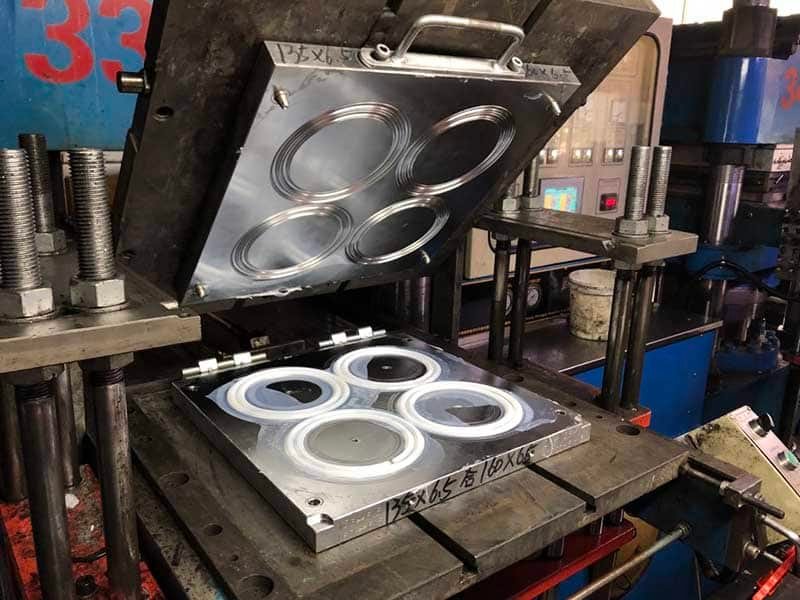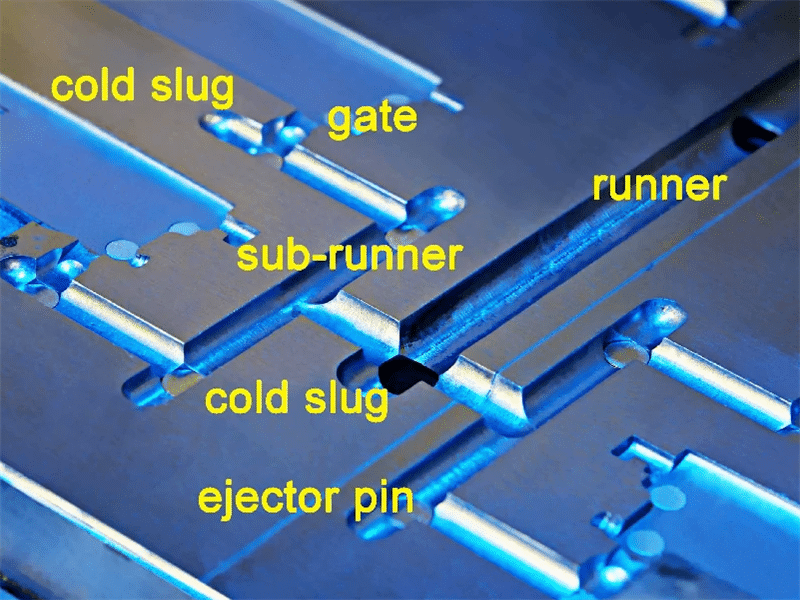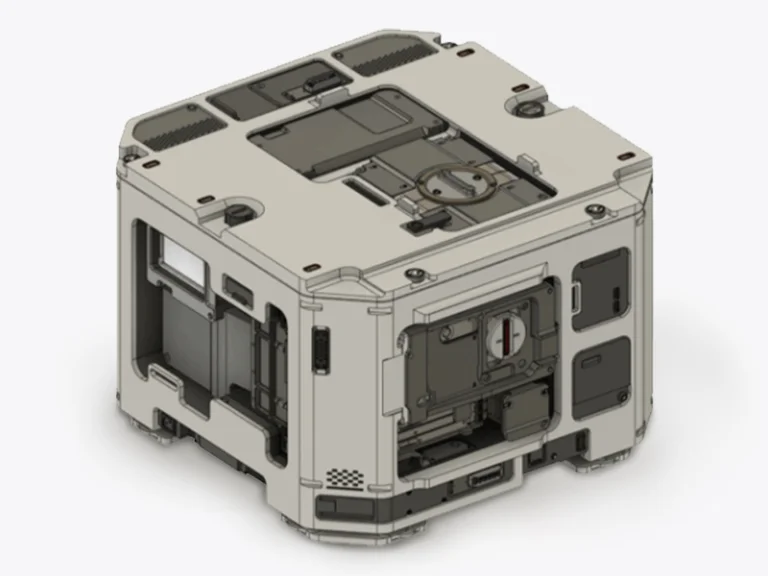Ethylene Propylene Diene Monomer (EPDM) rubber is a versatile synthetic elastomer widely used across various industries due to its exceptional durability and resistance to environmental factors. Among the many manufacturing techniques available, EPDM injection moulding has emerged as a preferred method for producing high-precision, complex rubber components eff iciently.
What is EPDM Rubber?
EPDM rubber is a synthetic elastomer made from 45–75% ethylene and propylene, plus 2–12% diene monomers that allow vulcanization to improve elasticity and durability. It offers excellent resistance to weather, UV, ozone, and oxidation, and works well in temperatures from -40°C up to 150°C (some grades to 177°C) while staying flexible. EPDM resists water, steam, acids, and alkalis but is not resistant to oils and hydrocarbons. It has high tensile strength, low compression set, and good electrical insulation. Peroxide-cured EPDM prevents bloom better than sulfur-cured types, though it has moderate abrasion resistance and less elasticity in extreme cold.

Comparison with Natural Rubber and SBR
Bellow is the properties comparison with other common elastomer materials.
| Property | EPDM | Natural Rubber | SBR |
|---|---|---|---|
| Weather Resistance | Excellent (UV, ozone, oxidation) | Poor (cracks outdoors) | Poor (limited UV resistance) |
| Temperature Range | -40°C to 150°C (up to 177°C) | -50°C to 80°C | -40°C to 100°C |
| Chemical Resistance | Resists water, acids, alkalis | Limited, degrades with chemicals | Limited, poor oil resistance |
| Abrasion Resistance | Moderate | Excellent | Good |
| Flexibility (Low Temp) | Excellent | Good | Poor |
| Cost | Moderate | Moderate | Low |
Why EPDM is Suitable for Injection Molding?
EPDM’s suitability for EPDM injection molding stems from its excellent flow properties and rapid solidification. These characteristics enable EPDM compounds can flow easily into intricate mold cavities and precise molding of complex geometries with tight tolerances. The material’s compatibility with automated injection systems reduces waste and cycle times, ensuring cost-efficiency for manufacturers and procurement teams. EPDM exhibits predictable shrinkage rates, supporting intricate designs like gaskets and O-rings. The diene content in EPDM allows efficient vulcanization during injection molding cycles. and the ability to maintain properties post-vulcanization further enhances its appeal for EPDM injection moulding.
EPDM Injection Molding Process
The EPDM injection molding process involves several critical steps, each essential for producing high-quality rubber parts:
1. Material Preparation
Raw EPDM rubber is compounded with fillers, curing agents (such as sulfur or peroxide), plasticizers, and other additives to achieve the desired physical and chemical properties.
2. Preheating and Mixing
The compounded EPDM is preheated and mixed to ensure uniform temperature and composition before molding.
3. Heating and Plasticizing
The material is heated to a molten state in a screw/barrel system, reaching optimal viscosity for injection.
4. Injection
The heated EPDM compound is injected under high pressure into a closed mold cavity, filling cavities with precision.
5. Vulcanization (Curing)
Once injected, the rubber undergoes vulcanization inside the mold, where heat and pressure cause cross-linking of polymer chains, solidifying the part.
6. Cooling and Demolding
After curing, the mold is cooled to solidify the part further, then opened to eject the finished component.
7. Post-Processing
Parts may undergo trimming, inspection, or secondary treatments to meet specifications.
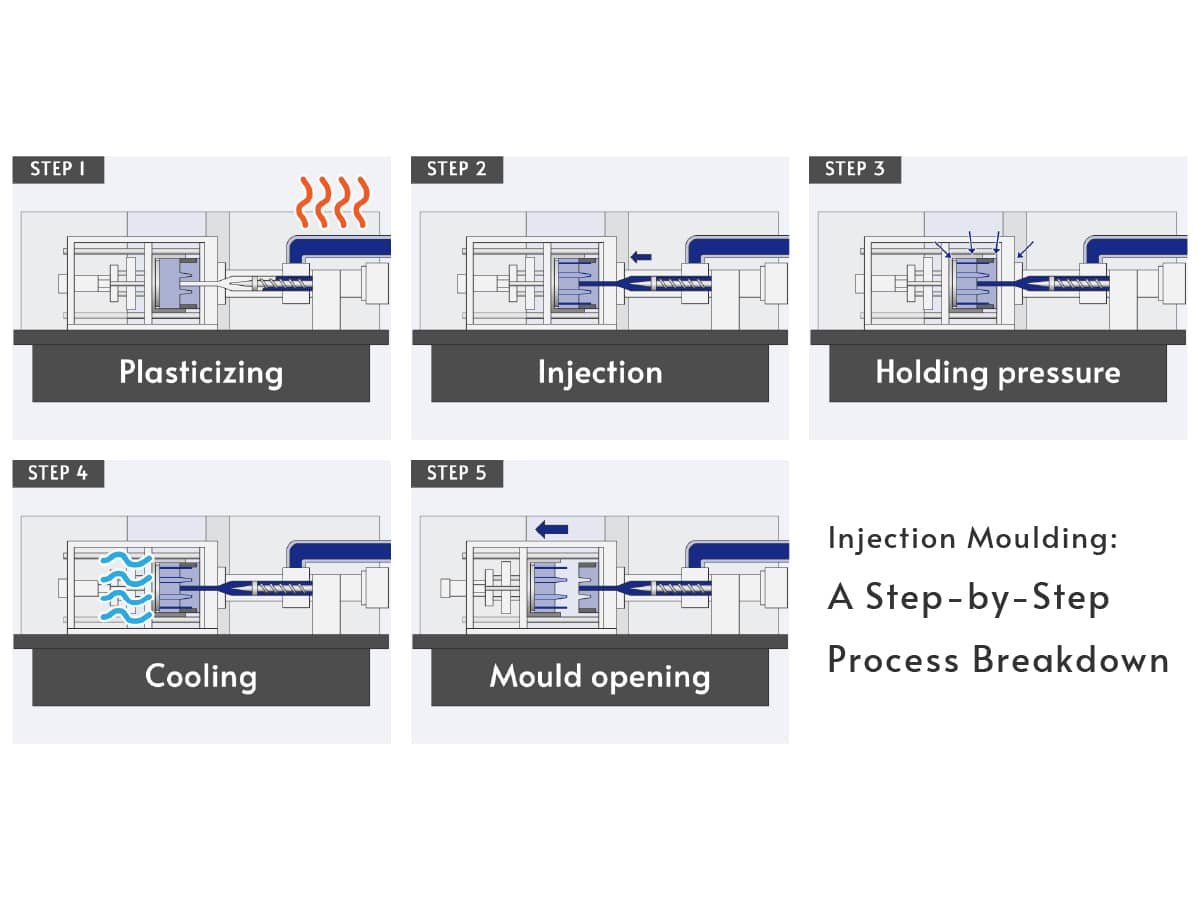
Injection Molding vs. Compression vs. Transfer Molding
EPDM rubber injection molding, compression molding and transfer moulding are three most common moulding types. Each EPDM rubber molding process with its own advantages and considerations.
| Method | Advantages | Disadvantages | Applications |
|---|---|---|---|
| Injection Molding | High precision, fast cycles, high volumes, intricate shapes | High tooling costs, long setup times | Automotive seals, gaskets, hoses |
| Compression Molding | Low tooling costs, ideal for large parts | Less precise, slower, manual operations | Large seals, low-volume parts |
| Transfer Molding | Precise, supports inserts, medium volumes | More flash, moderate costs | Electrical connectors, parts with inserts |
Common Challenges and Solutions in EPDM Injection Molding
Despite its advantages, EPDM injection molding presents several challenges:
Shrinkage and Dimensional Control
EPDM typically shrinks 10-20% during curing, which can cause dimensional inaccuracies.
Solution: Use low-shrinkage compounds, precise mold design and process control, including temperature and pressure optimization, help minimize shrinkage variability.
Short Shot and Bubbles:
Issue: Incomplete filling or trapped air results from low injection pressure, high speed, or poor mold venting.
Solution: Adjust pressure, temperature and speed, enhance venting, and pre-dry materials to eliminate moisture.
Surface Roughness:
Issue: Imperfections arise from unpolished molds, material inconsistencies, incorrect parameters, or volatiles can cause rough surfaces.
Solution: Polish molds, ensure material uniformity, and optimize injection settings.
Demolding Difficulties
Sticky parts or complex geometries can cause sticking or tearing during demolding.
Solution: Use mold release agents, optimize mold surface finish, and design appropriate draft angles.
Typical Applications of EPDM Injection Molded Products
EPDM injection molded parts are widely used in industries requiring durable, weather-resistant rubber components:
Automotive: Seals, weatherstripping, gaskets, vibration dampers.
Construction: Window and door seals, roofing membranes.
Electrical: Insulation parts, cable jacketing.
Appliances: Seals and gaskets for washing machines, refrigerators.
Industrial: Hoses, belts, protective covers.
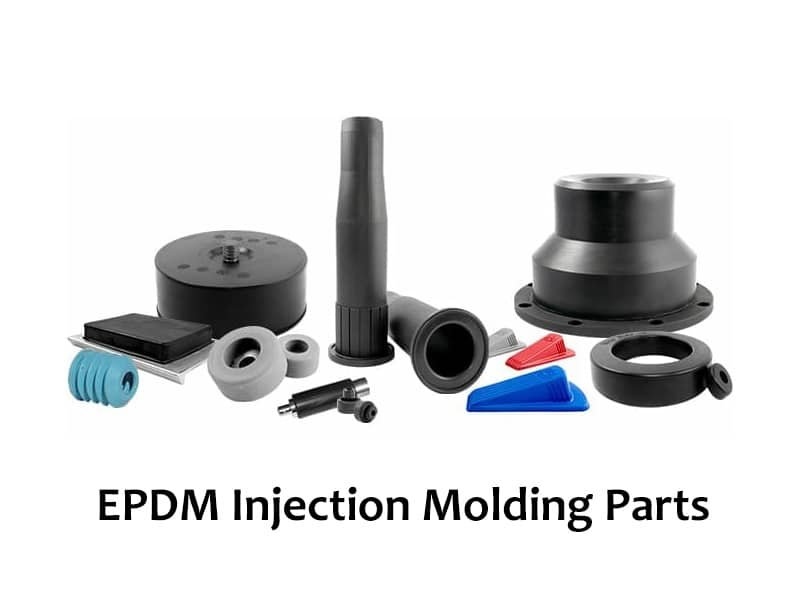
Design Suggestions and Material Selection Tips
To maximize the success of EPDM injection moulding, consider the following:
Material Selection:
Opt for peroxide-cured EPDM to avoid bloom, ensuring aesthetic and functional quality.
Blend EPDM with SBR or Neoprene for cost savings or enhanced properties like oil resistance.
Select grades based on specific needs: high-ethylene for strength, low-ethylene for flexibility, or specialized grades for extreme temperatures.
Design Tips:
- Incorporate adequate venting in molds to prevent bubbles and ensure complete filling.
- Design molds with draft angles (1–2°) to facilitate demolding and reduce sticking.
- Account for shrinkage in mold design, typically 1–3%, depending on the EPDM grade.
- Include cooling channels to optimize cycle time.
- Prototype and test parts to validate process parameters like temperature (160–200°C) and injection pressure (800–1200 bar).
- Monitor mold temperature to ensure consistent vulcanization.
- Use simulation software to predict shrinkage and flow patterns.
Conclusion
EPDM rubber injection molding combines the excellent material properties of EPDM with the efficiency and precision of injection molding technology. When choosing EPDM rubber molding manufacturer, the experties, customisation capabilities, quality control measures, and production capacity are the factors should be considered. Jiangzhi supply professional EPDM rubber molding services, included injeciton molding and compression molding. Partnering with Jiangzhi, and get high-quality solutions tailored to your needs.

